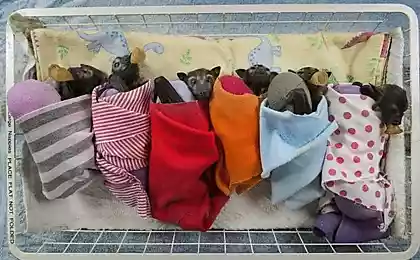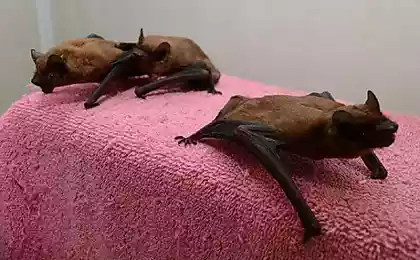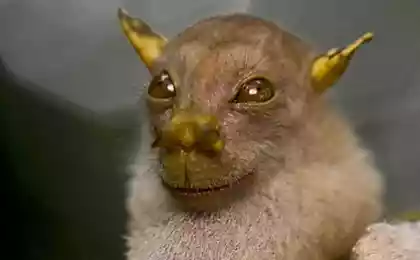642
Tolga Bat Hospital — hospital for orphaned bats

Wrapped in a blanket, bathe and feed from a bottle — so take care of orphaned bats at Tolga Bat Hospital — hospital for bats in Australia. Orphaned winged mammals can get there the best care. See adorable photos of these unusual animals that need protection people.

1. Tolga Bat Hospital in Australia is a place where the bats that have been abandoned or orphaned, you will find tender care volunteers and hospital staff. (Photo: Tolga Bat Hospital/facebook.com).

2. The mission of the Australian hospital for bats is to protect these amazing mammals and their natural habitat. (Photo: Tolga Bat Hospital/facebook.com).

3. A large part of bats admitted to the hospital due to disease caused by the bite of one of the most dangerous types of ticks in the world — Ixodes holocyclus, lives on the East coast of Australia. The bite of this mite in the body of his victim's fall neurotoxins that cause paralysis. (Photo: Tolga Bat Hospital/facebook.com).

4. Bats feed on nectar, flowers and fruits that grow very low, almost on ground or on low bushes, and in those places there is the biggest concentration of dangerous ticks. (Photo: Tolga Bat Hospital/facebook.com).
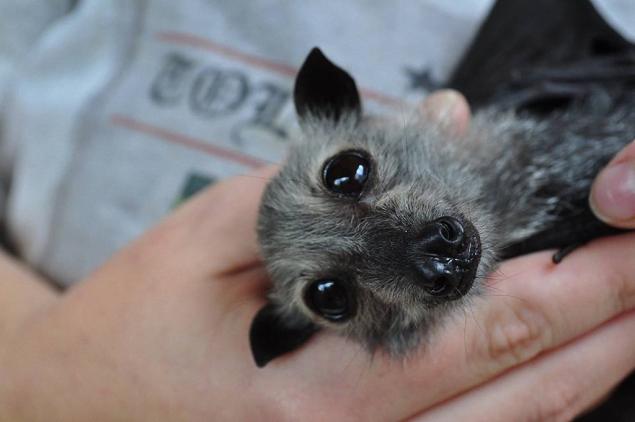
5. After a few bites from bats within a few days of developing paralysis, they fall from the branches and die. (Photo: Tolga Bat Hospital/facebook.com).

6. Due to such bites killed many females bats, who at that time cared for his offspring. Orphaned cubs are often so small that they are simply unable to take care of themselves. They will not be able to find food without the help of people will not survive. (Photo: Tolga Bat Hospital/facebook.com).

7. Without the help of the Tolga Bat Hospital staff in small and sick bats do not have the slightest chance of survival. (Photo: Tolga Bat Hospital/facebook.com).
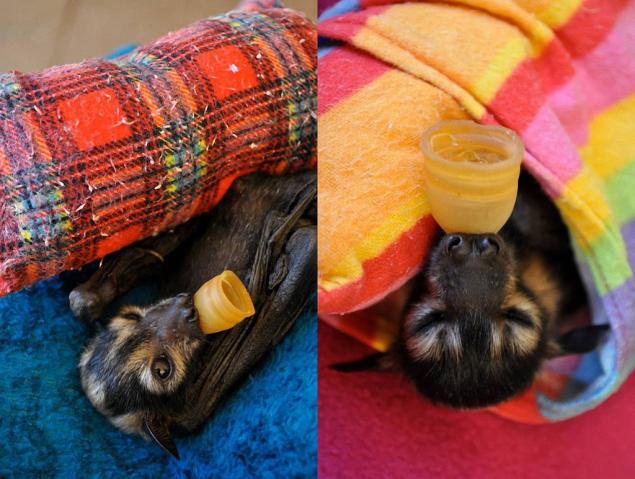
8. Therefore, from September to December, during the period when females of bats appears offspring, volunteers from the Tolga Bat Hospital daily combing the area in search of the orphaned bat babies, or older patients individuals. (Photo: Tolga Bat Hospital/facebook.com).

9. The hospital staff find usually paralyzed bats already on the ground. Each year, staff help about 300 orphaned young of the species of bats. (Photo: Tolga Bat Hospital/facebook.com).

10. Initially volunteers fed small bats milk from a bottle every four hours. When they turn three months, they begin to eat the fruit and learn to fly. (Photo: Tolga Bat Hospital/facebook.com).

11. Hospital workers do not only care for bats, they also help bereaved individuals to adapt in the wild and teach them to be independent. (Photo: Tolga Bat Hospital/facebook.com).

12. After a few months most of the bats leaves the hospital and returns to life in the wild. (Photo: Tolga Bat Hospital/facebook.com).

13. Sometimes hospital staff have to travel hundreds of kilometers to get to those who need their help. (Photo: Tolga Bat Hospital/facebook.com).

14. To the hospital fall also injured bats that are entangled in the barbed wire and hurt the membranes of their wings. (Photo: Tolga Bat Hospital/facebook.com).

15. Still brought here "pensioners" — old individuals of bats from zoos. Here they can count on concern and care for the rest of their days. (Photo: Tolga Bat Hospital/facebook.com).

16. Tolga Bat Hospital opened for tourists for a fee, can watch not only the work of volunteers and hospital employees, but for the life of its winged inhabitants. Proceeds from ticket sales funds go to funding programs to protect bats. (Photo: Tolga Bat Hospital/facebook.com).

17. The wingspan of bats can reach 1.5 meters. (Photo: Tolga Bat Hospital/facebook.com).

18. Tolga Bat Hospital — a place where bats are wrapped up in a blanket, feed bottle, bathe, and treat and teach self — sufficiency, doing everything to preserve this species. (Photo: Tolga Bat Hospital/facebook.com).
Source: fullpicture.ru


